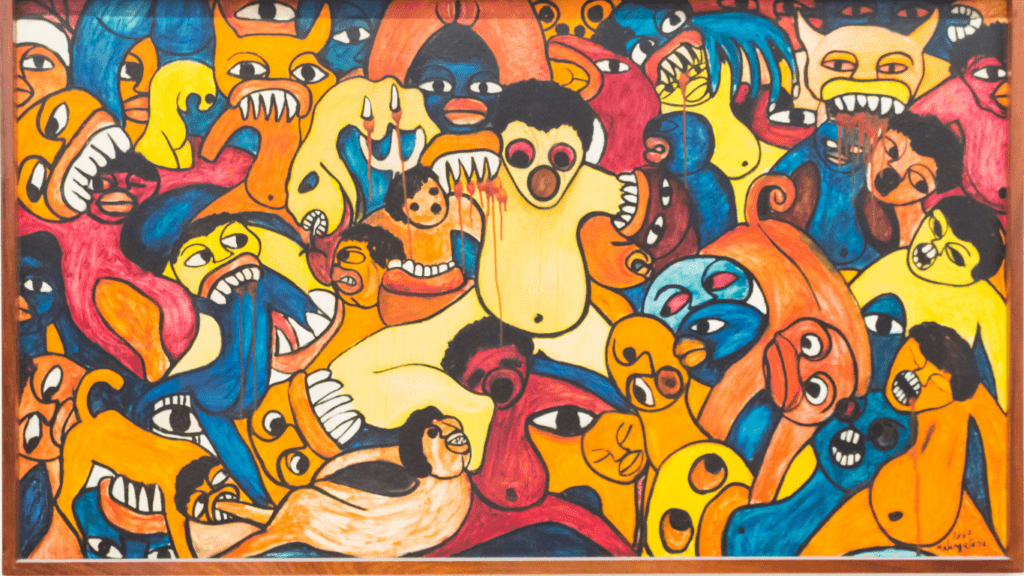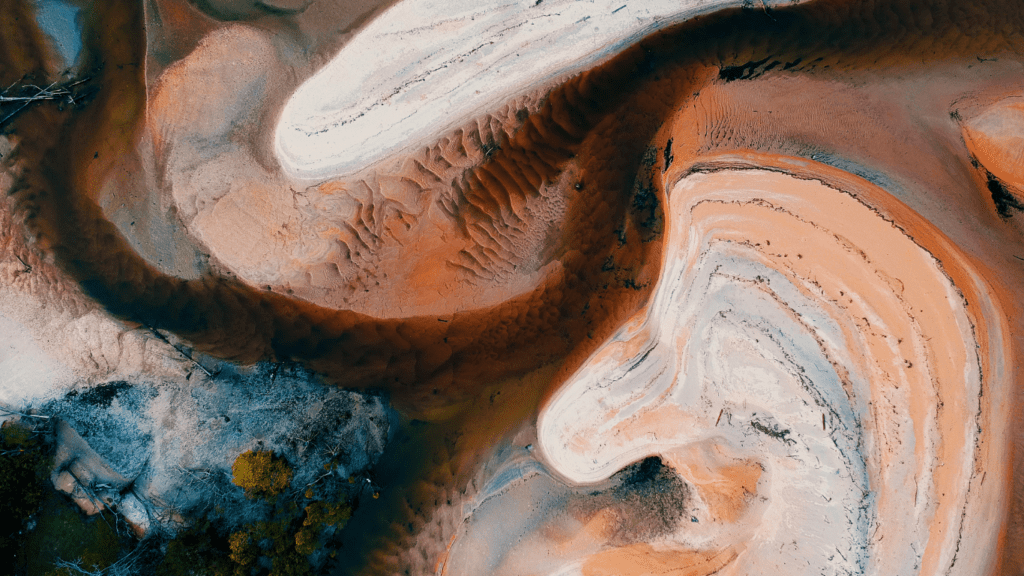Jackson Pollock: The Pioneer of Abstract Expressionism
Jackson Pollock emerged as a transformative figure in abstract expressionism. His innovative techniques and daring creativity set him apart from his contemporaries. Pollock’s art broke free from traditional formats, pushing boundaries in ways previously unimagined.
By the late 1940s, Pollock had developed his signature drip technique. This method involved dripping, splattering, and pouring paint onto a canvas laid on the floor. This unorthodox approach enabled him to manipulate paint’s movement and interaction with canvas, creating intricate and dynamic compositions.
His artwork often featured layers of color, texture, and form. Examples include “No. 5, 1948” and “Autumn Rhythm (Number 30).” These pieces exemplify his ability to convey emotion and energy. Pollock once stated that his process allowed him to “be in the painting,” underscoring his immersive connection to his work.
Critics initially struggled to categorize Pollock’s art. Over time, however, they recognized his contributions as integral to abstract expressionism’s evolution. His influence extended beyond painting, impacting various art forms and philosophies. Pollock’s legacy remains evident in contemporary art, where his pioneering spirit continues to inspire bold, innovative creations.
The Evolution of Pollock’s Artistic Style
Jackson Pollock’s artistic journey reflects a significant evolution over the years. His transition from traditional techniques to pioneering abstract expressionism marked milestones in modern art.
Early Influences and Training
Early in his career, Pollock studied under Thomas Hart Benton, an acclaimed regionalist painter. Benton’s emphasis on rhythmic compositions and dynamic movement profoundly impacted Pollock’s later work. Inspired by Mexican muralists like Diego Rivera, Pollock integrated scale and boldness into his developments. In addition to these influences, his exposure to Surrealism’s subconscious-driven techniques expanded his creative horizons.
Transition to Abstract Expressionism
By the 1940s, Pollock began gravitating towards abstract expressionism, shedding traditional representational art. Encouraged by his artist wife Lee Krasner and influences from Automatism, Pollock embraced spontaneity. His drip technique, developed during this period, encapsulated the essence of abstract expressionism. Utilizing unorthodox tools like:
- sticks
- knives
he created complex layers of paint. These techniques culminated in masterpieces that redefined the conventions of art, positioning Pollock as a central figure in abstract expressionism.
Understanding the Drip Technique

The drip technique, pioneered by Jackson Pollock, revolutionized abstract expressionism with its radical approach to painting. Let’s delve into the crucial elements that made this technique so distinctive.
Materials and Tools
Pollock used a diverse array of materials in the drip technique. He typically chose enamel, aluminum, or standard house paint. By opting for these unconventional paints over traditional oils, Pollock achieved unique textures and layers in his work.
Tools were equally important in this technique. Pollock often used sticks, hardened brushes, and even syringes to drip and pour paint onto his canvas. This method enabled greater control over paint flow and consistency.
Methodology and Process
Pollock’s process began with laying a canvas on the floor. This horizontal approach provided a 360-degree workspace, allowing Pollock to move around freely.
The technique itself involved dripping, pouring, and splattering paint from various heights and angles. Pollock would layer paint meticulously, creating intricate webs and trails. The dynamic movement of his body during painting contributed significantly to the overall composition.
Pollock’s technique emphasized spontaneity and instinct. Each gesture and drop of paint was an expression of raw emotion, reflecting the artist’s internal state. By mastering this unorthodox method, Pollock transformed the canvas into a vivid representation of abstract expressionism.
Iconic Works Utilizing the Drip Technique
Jackson Pollock’s drip technique marked a turning point in modern art. Here are some key pieces that highlight his revolutionary style.
Key Pieces and Their Significance
- No. 5, 1948: This piece stands out for its intricate web of paint splatters and drips, showcasing Pollock’s mastery of controlled chaos. Using layers of enamel paint on fiberboard, he created a dense, energetic composition that drew viewers into its depths. The work fetched $140 million in a 2006 private sale, underscoring its significance.
- Autumn Rhythm (Number 30): Created in 1950, this large canvas embodies the essence of Pollock’s drip technique. The sprawling lines and dynamic forms communicate motion and emotion. By placing the canvas on the floor and applying paint from all angles, Pollock achieved a sense of freedom and fluidity.
- Blue Poles (Number 11, 1952): Pollock used aluminum and oil paint to create striking contrasts in this piece. The blue vertical lines, or “poles,” anchor the composition amidst the frenetic background, exemplifying the balance between order and chaos in his art.
Critical Acclaim and Public Reception
Pollock’s drip paintings garnered mixed reactions initially. Critics praised his innovation and emotional intensity. Clement Greenberg, an influential art critic, lauded Pollock’s work as groundbreaking, noting its departure from traditional forms.
Public reception evolved over time. While early reactions were polarized, his works eventually gained widespread recognition. Exhibitions, such as the 1949 solo show at Betty Parsons Gallery, increased his visibility. By the 1950s, Pollock became a prominent figure in the art world, celebrated for his contribution to abstract expressionism.
The debate over Pollock’s technique and its implications for art continued, fueling interest in his work. Today, his iconic drip paintings remain central to discussions about modern art and its evolution.
Impact on Contemporary Art
Jackson Pollock’s drip technique revolutionized abstract expressionism. His method reshaped how artists approach creativity and left an enduring mark on contemporary art.
Influence on Other Artists
Pollock’s innovative technique inspired numerous artists. Willem de Kooning and Lee Krasner, for example, explored new forms of expression influenced by Pollock’s work. De Kooning’s dynamic brushstrokes and Krasner’s bold compositions trace back to Pollock’s influence. Many artists embraced the freedom Pollock’s technique offered, allowing for more experimentation with form and material.
Legacy in Modern Art
Pollock’s legacy permeates modern art. His methods paved the way for later movements, such as minimalism and conceptual art. Richard Serra and Frank Stella are notable artists who drew inspiration from Pollock’s emphasis on process and materials. Pollock’s impact extends to art education, where his unconventional techniques are studied and replicated, reinforcing his status as a pioneer in the contemporary art world.





